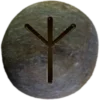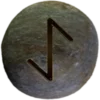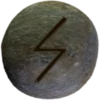Last Updated on February 1, 2025
Table of Contents


Sveið’s (pronounced “Sveh-eeths”) appears in Norse mythology as a Valkyrie. Her name means “Gentle” or “Kind,” though some scholars suggest “Swift” as a possible meaning. Other spellings include Sveid and Sveiðr (“Sveh-eed-er”). She appears in the Nafnaþulur section of Skáldskaparmál within the Prose Edda, where her name is listed among other Valkyries. ![]()
Valkyries serve Odin by choosing warriors for Valhalla. Sveið’s likely played this role, selecting the worthy dead from battlefields. The sources do not give specific details about her actions, but her inclusion suggests she shared in the duties of her sisters.
In Norse poetry, Valkyries ride through the sky on great horses. Some sources describe them as shimmering in battle, their armor glowing like the northern lights. Others depict them as fierce spirits, their presence marking the fate of warriors. Sveið’s name stands out because it contrasts with the more violent meanings of other Valkyries’ names, like Skögul (“Shaker”) and Hildr (“Battle”). This may mean she had a gentler nature or guided warriors with care rather than force.
Valkyries sometimes act as lovers or protectors of heroes. In the Poetic Edda, the Valkyrie Sigrún helps the warrior Helgi, while Brynhildr’s story connects to the downfall of heroes in Völsunga Saga. While no known stories link Sveið’s to a hero, her presence in the lists suggests she was an important figure in the warrior afterlife.
Some later folklore softened the image of Valkyries. They became more like guardian spirits than warriors of fate. Sveið’s, with her name suggesting gentleness, may have fit this later view. However, in the original myths, Valkyries followed Odin’s will without hesitation. Sveið’s likely did the same, ensuring the fallen found their rightful place.
Runes Linked to Sveið’s
Two Elder Futhark runes connect with Sveið’s: Algiz (ᛉ) and Eihwaz (ᛇ). ![]()
Algiz (pronounced “Ahl-geez”) represents protection and divine guidance. Valkyries guide fallen warriors, making this rune a fitting symbol for Sveið’s. It also resembles an outstretched hand, as if offering safety or selection.
Eihwaz (pronounced “Ay-wahz”) symbolizes transition and fate. Valkyries choose who lives and who dies in battle, shaping warriors’ fates. This rune also connects to Yggdrasil, linking Sveið’s to the cosmic order of Norse belief.
Her Importance to Asatru
To modern Asatruar, Sveið’s represents the deep bonds between warriors and the divine. She reminds followers that honor and bravery determine one’s afterlife.
Her name suggests a balance between fate and compassion. While many Valkyries bring death, Sveið’s may guide fallen warriors with kindness. Asatruar who honor her may see her as a protector of the worthy.
Valkyries also represent the power of women in Norse belief. Sveið’s, like her sisters, held great influence over battle and destiny. Her presence in ancient texts shows that women could hold sacred, powerful roles.
Some Asatruar may honor Sveið’s in rituals for warriors, veterans, or those seeking strength in hardship. Her name, meaning “Gentle” or “Swift,” reminds followers that even in war, guidance and care matter.


